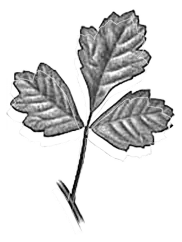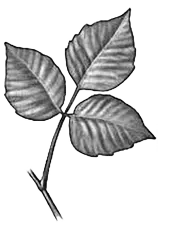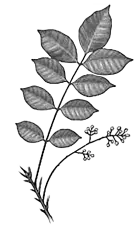
URUSHIOL (oo-roo-shē-Ôl) Urushiol is an oily mixture of organic compounds with allergenic properties found in Poision oak, Poision Ivy, and Poision Sumac. In most individuals, urushiol causes painful skin rash, blisters, and itching on contact, this is commonly known as urushiol-induced contact dermatitis. Urushoil can remain on directly exposed textiles and tools for an extended duration of time.
URUSHIOL BASED PLANT IDENTIFICATION
-
POISON OAK

Poison oak has leaves that look like oak leaves, usually with three leaflets but sometimes up to seven leaflets per leaf group. It grows as a vine or a shrub. Poison oak is more common in the western United States, but it is also found in the eastern United States and, rarely, in the Midwest.
-
POISON IVY

Poison ivy usually has three broad, spoon-shaped leaves or leaflets ("Leaves of three? Let it be!"), but it can have more. It may grow as a climbing or low, spreading vine that sprawls through grass (more common in the eastern United States) or as a shrub (more common in the northern United States, Canada, and the Great Lakes region).
-
POISON SUMAC

Poison sumac has 7 to 13 leaflets per leaf stem. The leaves have smooth edges and pointed tips. Poison sumac grows as a shrub or small tree. It is found in wooded, swampy areas, such as Florida and parts of other southeastern states, and in wet, wooded areas in the northern United States.
CONTACT US
MESSAGES AND INQUIRES
